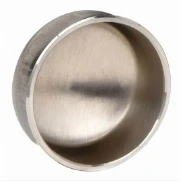-
Cangzhou Yulong Steel Co., Ltd.
-
Phone:
+86 13303177267 -
Email:
admin@ylsteelfittings.com
- English
- Arabic
- Italian
- Spanish
- Portuguese
- German
- kazakh
- Persian
- Greek
- French
- Russian
- Polish
- Thai
- Indonesian
- Vietnamese
- Zulu
- Korean
- Uzbek
- Hindi
- Serbian
- Malay
- Ukrainian
- Gujarati
- Haitian Creole
- hausa
- hawaiian
- Hebrew
- Miao
- Hungarian
- Icelandic
- igbo
- irish
- Japanese
- Javanese
- Kannada
- Khmer
- Rwandese
- Afrikaans
- Albanian
- Amharic
- Armenian
- Azerbaijani
- Basque
- Belarusian
- Bengali
- Bosnian
- Bulgarian
- Catalan
- Cebuano
- China
- China (Taiwan)
- Corsican
- Croatian
- Czech
- Danish
- Esperanto
- Estonian
- Finnish
- Frisian
- Galician
- Georgian
- Kurdish
- Kyrgyz
- Lao
- Latin
- Latvian
- Lithuanian
- Luxembourgish
- Macedonian
- Malgashi
- Malayalam
- Maltese
- Maori
- Marathi
- Mongolian
- Myanmar
- Nepali
- Norwegian
- Norwegian
- Occitan
- Pashto
- Dutch
- Punjabi
- Romanian
- Samoan
- Scottish Gaelic
- Sesotho
- Shona
- Sindhi
- Sinhala
- Slovak
- Slovenian
- Somali
- Sundanese
- Swahili
- Swedish
- Tagalog
- Tajik
- Tamil
- Tatar
- Telugu
- Turkish
- Turkmen
- Urdu
- Uighur
- Welsh
- Bantu
- Yiddish
- Yoruba

Dec . 25, 2024 02:26 Back to list
50mm Metal Pipe Specifications and Applications in Various Industries
Understanding 50mm Metal Pipes A Comprehensive Overview
Metal pipes are fundamental components in various industrial and construction applications, playing a vital role in transportation, structural integrity, and machinery functionality. Among the varieties available, the 50mm metal pipe has garnered considerable attention due to its versatility and strength. This article delves into the characteristics, applications, manufacturing processes, and benefits of 50mm metal pipes.
Characteristics of 50mm Metal Pipes
The term 50mm refers to the nominal diameter of the pipe, which is equivalent to approximately 2 inches. The specifications of 50mm metal pipes may vary based on the material used—steel, aluminum, brass, or copper are common choices. These pipes can be categorized into different types based on their applications, such as seamless, welded, or threaded.
Seamless pipes are made from a solid round steel billet that is heated and pushed or pulled into shape until the desired diameter is achieved. This process eliminates any joints, making seamless pipes particularly strong and resistant to pressure. On the other hand, welded pipes are formed by rolling a flat piece of metal into a cylindrical shape and welding the joint, which makes them more cost-effective but slightly less durable under certain conditions.
Applications of 50mm Metal Pipes
The versatility of 50mm metal pipes makes them applicable in numerous fields
1. Fluid Transportation These pipes are widely used in plumbing systems to transport water, gas, and other liquids. Their ability to withstand high pressure and corrosion makes them suitable for both residential and industrial plumbing.
2. Structural Support In construction, 50mm metal pipes serve as essential components in scaffolding, frameworks, and supports. Their strength-to-weight ratio helps maintain structural integrity while minimizing material costs.
3. Automotive and Machinery In the automotive industry, these pipes may be utilized in exhaust systems, fuel lines, and hydraulic systems. Their durability is critical in environments where exposure to heat and pressure is common.
4. Manufacturing Various manufacturing processes, including fabrication and machining, utilize 50mm metal pipes for the creation of equipment, fixtures, and systems that require sturdy frameworks.
Manufacturing Process
The manufacturing process of 50mm metal pipes involves several key stages
50mm metal pipe

1. Material Selection The first step is selecting the appropriate metal, with considerations for factors like strength, weight, corrosion resistance, and cost. Common choices include carbon steel, stainless steel, and aluminum.
2. Pipe Forming The selected material is then shaped into pipes. For seamless pipes, the material is heated and extruded, while for welded pipes, it is rolled and welded.
3. Surface Treatment After forming, pipes often undergo surface treatment processes such as galvanization, powder coating, or painting to enhance resistance to rust and wear.
4. Quality Control Rigorous quality control measures are crucial throughout the manufacturing process. Various tests, including pressure tests, dimensional checks, and non-destructive testing, ensure that the pipes meet industry standards and specifications.
Benefits of 50mm Metal Pipes
The advantages of using 50mm metal pipes are manifold
- Durability Metal pipes are known for their longevity and resistance to environmental factors. They can withstand rough conditions, making them suitable for outdoor applications.
- Pressure Resistance Designed to handle high pressure, 50mm metal pipes can carry various substances safely, making them ideal for industrial and commercial uses.
- Versatility The range of materials and types available allows for customization according to the specific needs of a project.
- Cost-Effectiveness Though the initial investment might be higher compared to plastic alternatives, the longevity and reduced need for replacement make metal pipes a cost-effective choice in the long term.
- Recyclability Metal pipes can be recycled without losing quality, contributing to sustainability efforts within various industries.
Conclusion
In conclusion, 50mm metal pipes are indispensable in today's industrial landscape. Their characteristics, widespread applications, and benefits position them as a reliable choice for various purposes, from plumbing to structural support. As industries continue to evolve, the demand for high-quality metal pipes will likely increase, driving innovations in manufacturing and application techniques. Understanding the properties and applications of these pipes is essential for professionals in construction, engineering, and manufacturing sectors, ensuring they make informed decisions that enhance efficiency and safety in their projects.
Latest news
-
ANSI 150P SS304 SO FLANGE
NewsFeb.14,2025
-
ASTM A333GR6 STEEL PIPE
NewsJan.20,2025
-
ANSI B16.5 WELDING NECK FLANGE
NewsJan.15,2026
-
ANSI B16.5 SLIP-ON FLANGE
NewsApr.19,2024
-
SABS 1123 FLANGE
NewsJan.15,2025
-
DIN86044 PLATE FLANGE
NewsApr.19,2024
-
DIN2527 BLIND FLANGE
NewsApr.12,2024
-
JIS B2311 Butt-Welding Fittings LR/SR 45°/90° /180°Seamless/Weld
NewsApr.23,2024











